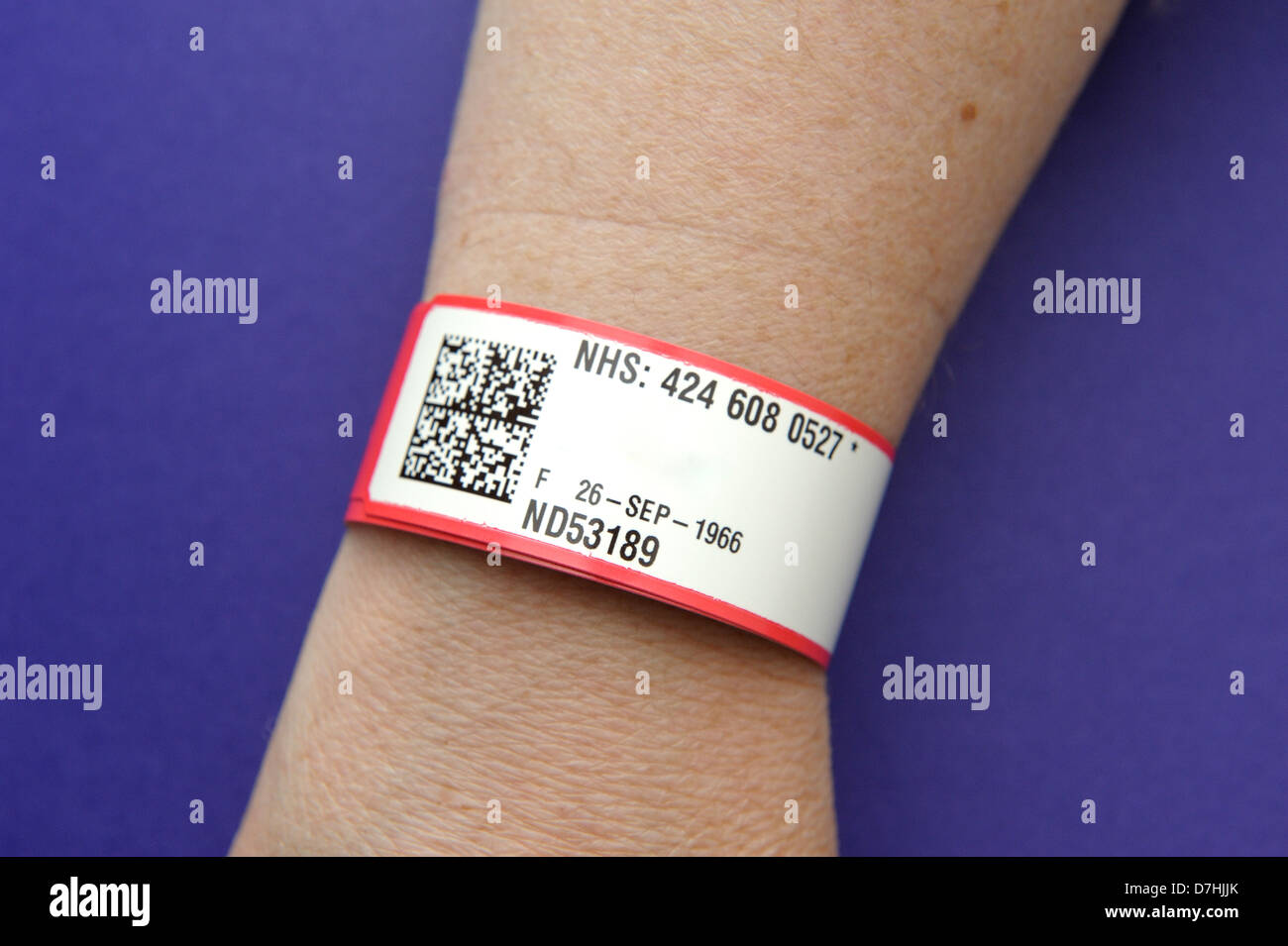Top Features to Look for in a Durable Patient Identification Band
Top Features to Look for in a Durable Patient Identification Band
Blog Article
Checking Out the Numerous Sorts Of Patient Identification Band Made Use Of in Clinical Facilities
In the complex globe of healthcare, the important role of Patient Identification bands often goes unnoticed. These bands, varying from easy paper wristbands to sophisticated RFID bands, form the foundation of Patient safety and security protocols, ensuring accuracy in Patient Identification.
Comprehending the Importance of Patient Identification Bands
While they may appear like plain accessories, Patient Identification bands play an essential role in medical facilities. These bands serve as an essential tool for confirming Patient identity, protecting against clinical mistakes connected to misidentification. Patient Identification bands likewise help in simplifying management tasks, ensuring accurate record-keeping and invoicing.
Typical Paper Wristbands: Their Use and Limitations
Typical paper wristbands have been a staple in Patient Identification across numerous clinical centers. While their use prevails, they nurture certain constraints that may impact their efficiency in Patient monitoring. This area will concentrate on the range of their application and the intrinsic drawbacks related to their use.
Paper Wristbands: Use Scope
In the realm of Patient Identification, paper wristbands have long held an essential function. These bands are normally made use of in outpatient setups, where the Patient's stay is short-lived. The wristbands consist of vital info such as the Patient's name, day of birth, and a distinct Identification number. This simple, yet reliable system, allows doctor to promptly and accurately identify patients, making sure the appropriate therapy is administered. Paper wristbands are likewise made use of in emergency situation situations, where quick Identification is extremely important. Their usage includes events like blood donation drives and mass inoculation programs, additionally highlighting their convenience. Regardless of innovations in innovation, the modest paper wristband continues to be a reputable and affordable option for Patient Identification in numerous medical care scenarios.
Limitations of Paper Wristbands
In spite of their extensive usage, paper wristbands are not without their disadvantages. In addition, paper wristbands commonly do not have the technical capacities of more modern choices, such as barcoding or RFID chips, restricting their performance to just showing created details. Paper wristbands can create pain or skin irritability to some individuals, specifically when used for extensive durations.
Barcoded Wristbands: Advancements in Patient Identification
While Patient Identification has long been a vital element of healthcare, the arrival of barcoded wristbands indicates a substantial leap forward. These bands utilize the simplicity of barcoding modern technology, enabling for Patient details to be rapidly checked and accessed. They enhance the rate and accuracy of Patient Identification, reducing the risk of clinical mistakes related to misidentification.
Superhigh Frequency Identification (RFID) Bands: an Action Towards Futuristic Medical Care
The evolution of Patient Identification bands has actually caused the appearance of Radio Regularity Identification (RFID) Bands (patient identification band). These ingenious tools existing key advantages for healthcare facilities, providing a more effective and technically progressed methods of Patient Identification. The implementation of RFID in healthcare is a significant step in the direction of an extra futuristic strategy to Patient monitoring and security
Recognizing RFID Bands

RFID Bands: Secret Advantages
Accepting a future where innovation and health care combine, radio frequency Identification bands use a number of essential benefits. Mainly, these bands boost Patient safety by providing accurate, immediate Identification, thus decreasing medical errors. RFID bands can save a vast quantity of Patient data, including case history and allergies, enabling customized treatment. They additionally simplify management jobs, as the automated data entry changes manual processes, boosting performance and reducing documentation. Furthermore, RFID Read More Here bands provide real-time tracking of individuals, critical in risky environments such as surgery or extensive care. These bands are immune and sturdy to ecological variables, guaranteeing constant functionality. Overall, RFID bands stand for a significant development in Patient Identification modern technology, profiting both individuals and doctor.
Implementing RFID in Medical Care
As we you can try these out enter a technically sophisticated period, the execution of RFID bands in healthcare comes to be increasingly crucial. These bands supply a seamless method to track and identify patients, ensuring their safety and security and boosting efficiency in therapy procedures. RFID bands use many benefits over standard Identification approaches. They can save a vast amount of information, consisting of the Patient's medical background and treatment strategies, which can be easily accessed by health care carriers. This information helps physicians make notified choices regarding the Patient's therapy plan. RFID bands minimize clinical errors by giving precise Patient Identification, which is critical in avoiding misdiagnosis or incorrect medication management. Hence, the execution of RFID bands is a considerable action towards improving Patient safety and security and health care shipment.

Color-Coded Wristbands: Aiding in Quick and Accurate Medical Diagnosis
In the dynamic setting of a clinical center, color-coded wristbands have actually arised as vital tools for swift and specific Identification of a person's medical condition. These wristbands, used by people, carry certain colors that correspond to various medical conditions or conditions. This system is designed to supply prompt aesthetic hints to healthcare carriers, improving Patient safety and security and care top quality.
Techniques for Effective Execution and Monitoring of Patient ID Bands
Accomplishing optimum use Patient Identification bands necessitates a well-structured strategy for their application and monitoring. The very first step includes training all health and wellness personnel on the value of correctly using and checking out these bands. Medical facilities must systematize the use of ID bands across all departments, making certain uniformity and minimizing disparities. Normal audits must be performed to verify adherence to policies and to remedy any variances. Patient education is likewise crucial; people need to recognize the objective of the bands and the need for their continuous wear. patient identification band. It's important to have a back-up strategy in area, such as barcode scanning or biometrics, to make sure that Patient Identification is never ever jeopardized.
Final thought
Patient Identification bands are vital in clinical facilities to make certain safety and security and accuracy. Conventional paper, barcoded, RFID, and color-coded wristbands each hold unique benefits, ranging from cost-effectiveness to innovative information storage space and instant medical alerts. Effective execution and administration of pop over to this site these bands can substantially decrease clinical errors, increase efficiency, and boost total Patient treatment. Thus, understanding and making use of these Identification devices is vital for maintaining high standards in medical care.
These bands, varying from basic paper wristbands to advanced RFID bands, develop the foundation of Patient safety and security protocols, making sure precision in Patient Identification.The evolution of Patient Identification bands has actually brought concerning the introduction of Radio Frequency Identification (RFID) Bands. On the whole, RFID bands stand for a considerable improvement in Patient Identification innovation, profiting both patients and healthcare carriers.
RFID bands minimize clinical errors by providing exact Patient Identification, which is vital in protecting against misdiagnosis or incorrect medicine management. Patient education is likewise crucial; individuals need to recognize the purpose of the bands and the requirement for their constant wear.
Report this page